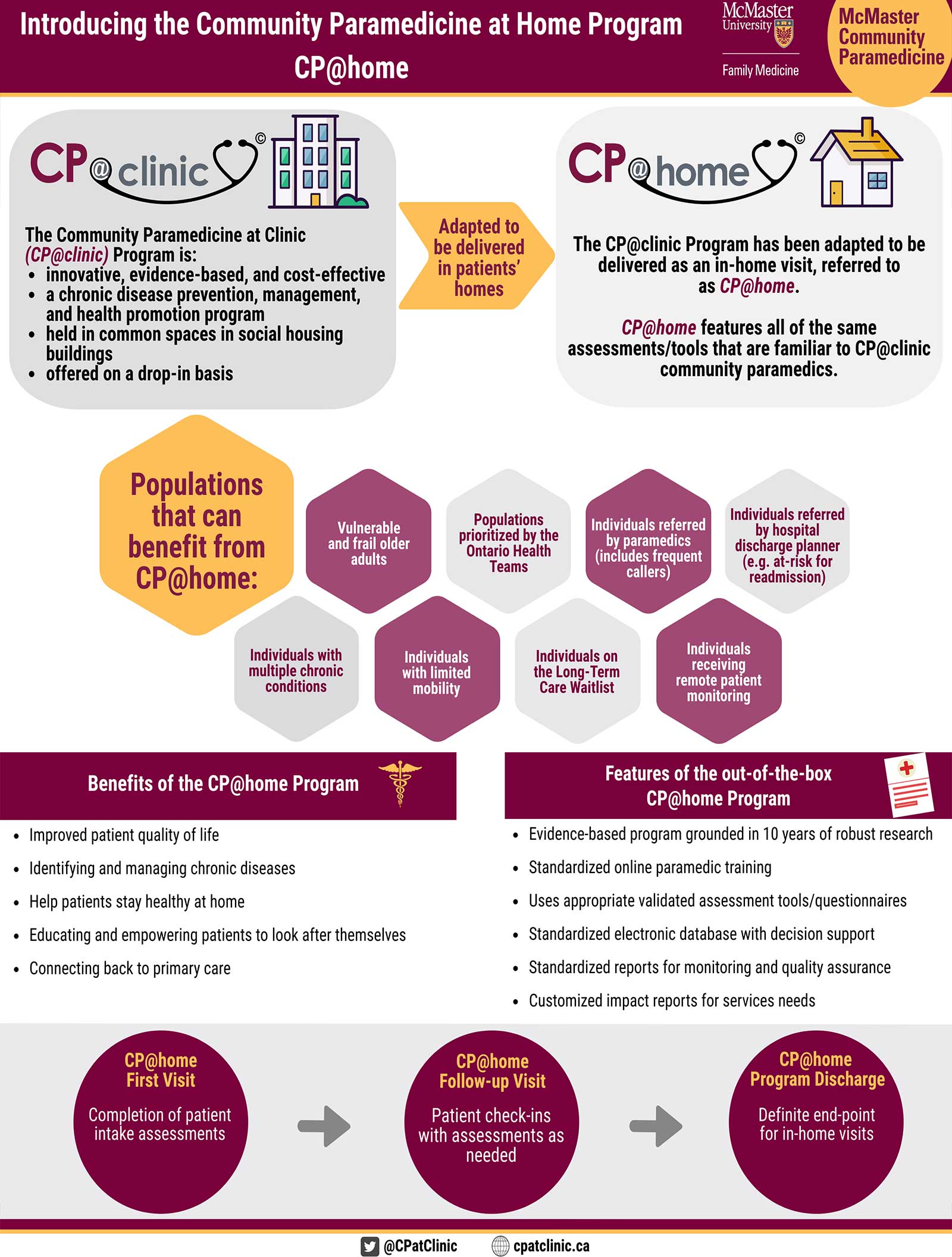
Community Paramedicine at Home (CP@home):
Paramedic Services Delivery Model Expansion adapting the CP@clinic Program to an in-home visit: CP@home
CP@home includes all assessments and tolls of the CP@clinic Program. The paramedics:
- conduct several evidence-based health assessments
- provide referrals to primary care and community resources
- assist participants in navigating the health care system
- provide participants with tailored health education
- engage participants in healthy lifestyle discussions
- set health goals with participants
With consent, the participant’s health assessment results are shared with their primary care provider. Paramedics will connect with any community resources to help facilitate participant referrals. Participants are encouraged to continue CP@home sessions to follow up regarding risk factors and program referrals.
Populations that will benefit from this adaptation include:
- frail older adults
- individuals referred by paramedics (including frequent callers)
- individuals referred by hospital discharge planners at risk of readmission to hospital
- individuals with limited mobility
- individuals on a Long-Term Care Waitlist
- individuals receiving remote patient monitoring







